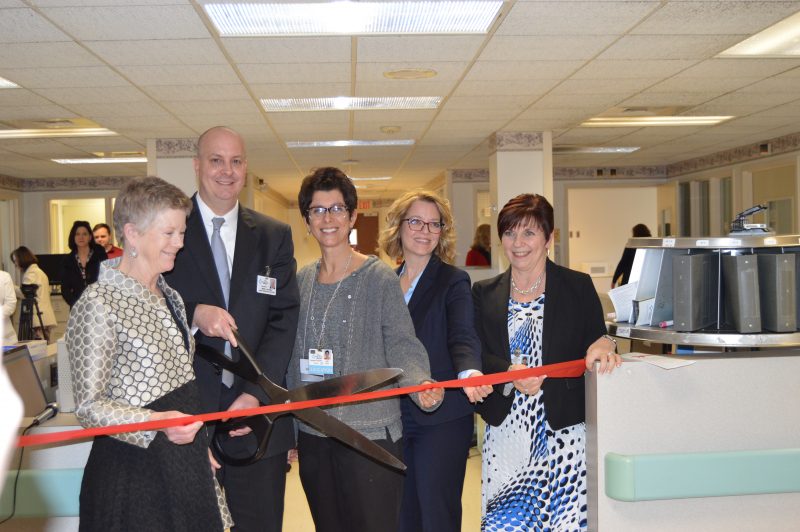

CLEARFIELD – Nursing students and staff at Penn Highlands Clearfield will have a one-of-a-kind opportunity.
During a ribbon-cutting ceremony held Monday, guests were given a tour of the new clinical simulation center.
The hospital and Lock Haven University’s Clearfield Campus worked together to relocate simulation equipment from LHU Clearfield’s clinical simulation laboratory on campus to the hospital’s former Intensive Care Unit.
This equipment, along with the relocation of the hospital’s clinical simulation equipment, will combine to form a new more realistic, hospital setting for student and staff training.
The Simulation Center will be used by LHU nursing students, and it will be available for use by other healthcare professionals from the hospital and the rest of the Penn Highlands Healthcare system.
The Sim Center is several rooms containing computer-operated mannequins that are life-like adult, child and infant patients. The Sims can be programed to talk, breathe and to have symptoms of illness that the nurses and medical staff will have to “treat.”
The students will use the Sims to practice procedures, such as catheter insertions and dressing changes, assessments including blood pressure, pulse, respiratory rate and listening to lungs, heart and bowel sounds, in a low-stress setting designed to enhance learning.
Each simulator, like a real patient, has a different illness. Computer-generated scenarios based on real patients are designed to teach students and staff to think and react quickly.
The programmed vital signs and abnormal body sounds are visible on a computer screen enabling students to check the accuracy of their assessment. The clinical instructor is present to manipulate the patient scenarios, guide and oversee the students.
Another benefit to having the Sim Center in an actual hospital is the ability for students to work in an actual hospital environment. The center has a nurses’ station, with computers for accessing the medical record for patient histories, lab results and physician’s orders. Dietary trays and medical equipment are also available for use in the patient simulations.“
Unlike situations with living patients, students can ask questions and take their time in a non-stressful environment. The teaching staff can “rewind” and re-do scenarios, which enable the students to improve their skills and increase their confidence.
“Every year, I ask the students to list their greatest fear,” Dee Hanna, nursing instructor and center coordinator, said.
“Each year, the students say their greatest fear is missing something or making a mistake and harming a patient. The biggest barrier to learning is fear. Once you overcome the fear, you can learn.”
Hanna said by practicing in the Sim Center, the students will learn to see the signs of trouble in their patients and they will know how to respond.
The lab opened Sept. 24 but more improvements are in the works. Already, two groups of LHU students are using the lab at least one time a week. Additionally, the hospital has also started to use the center by moving some of its staff training to that location.
“It is a means to strengthen the level of healthcare provided throughout the region,” Mark Norman, chief operating officer at Penn Highlands Healthcare, said.
“It will enhance our existing relationship with LHU, provide a safe environment where students and providers can practice patient care, maintain competencies, learn to work effectively with members of the healthcare team and use new skills in a setting where there is no actual risk to a patient.”
Hanna thanked everyone who came together to make the Sim Center possible.
“So many people worked to make this happen from the custodial and IT departments, to the Dietary department. It was great to see how well the hospital came together to embrace this project,” Hanna said.



